Leadership and Management: Motivational Theories and Strategies 20XX
VerifiedAdded on 2023/06/12
|15
|1151
|369
Presentation
AI Summary
This presentation explores motivational theories and strategies within leadership and management contexts, emphasizing their importance in enhancing organizational performance and continuous improvement. It covers content and process motivational theories, such as Maslow's Hierarchy of Needs and Vroom's Expectancy Theory, detailing how these theories can be applied to create effective motivational strategies. The presentation also addresses various business situations, recommending appropriate leadership and management approaches for managing performance and resolving employee conflicts. It suggests adopting a democratic management style to foster better relationships and recommends gathering employee feedback and recognizing high performers to ensure continuous improvement. The conclusion underscores the significance of building trust through well-crafted motivational strategies. Desklib offers this presentation and many other resources to support students.
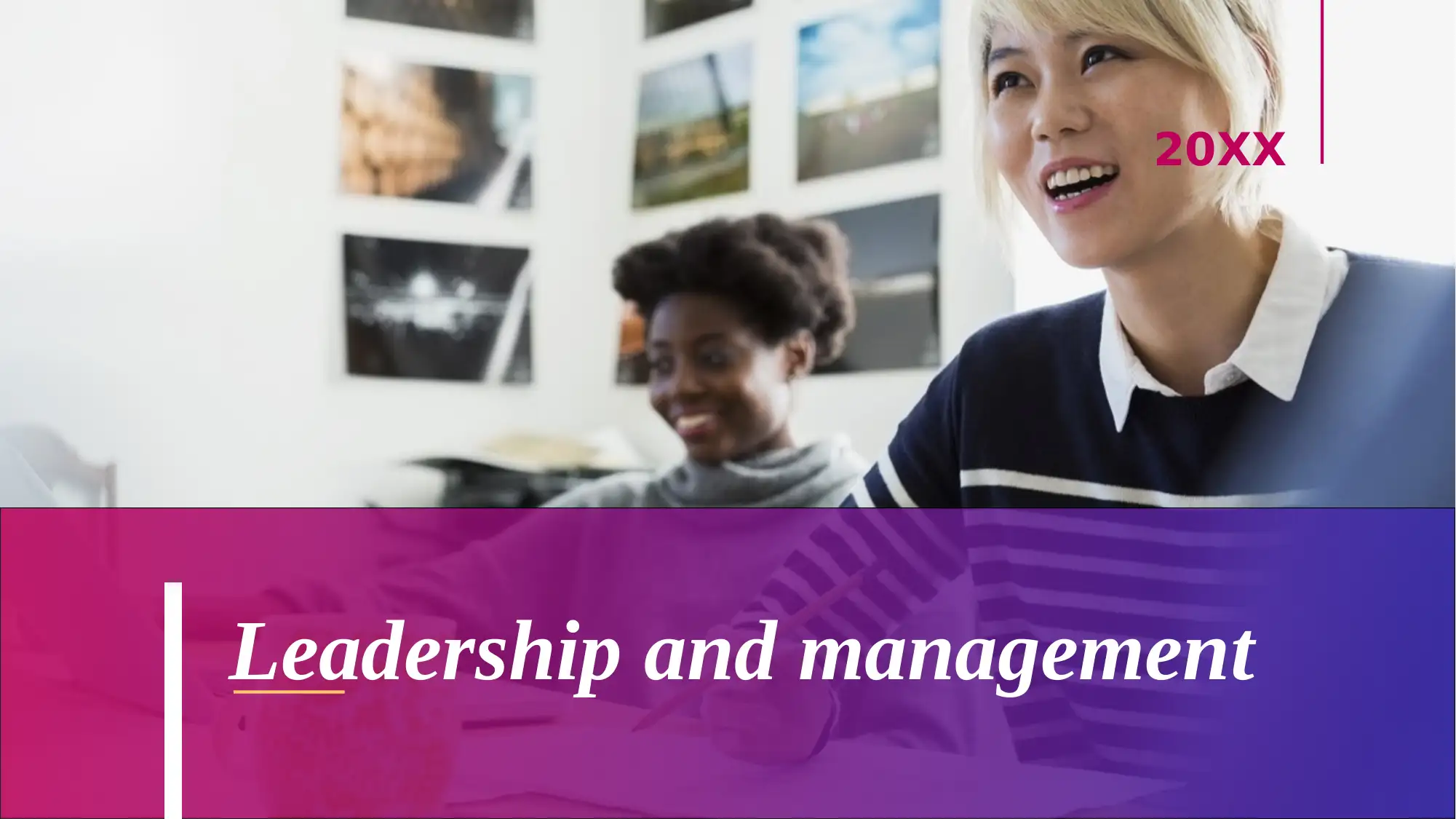
Leadership and management
20XX
20XX
Paraphrase This Document
Need a fresh take? Get an instant paraphrase of this document with our AI Paraphraser
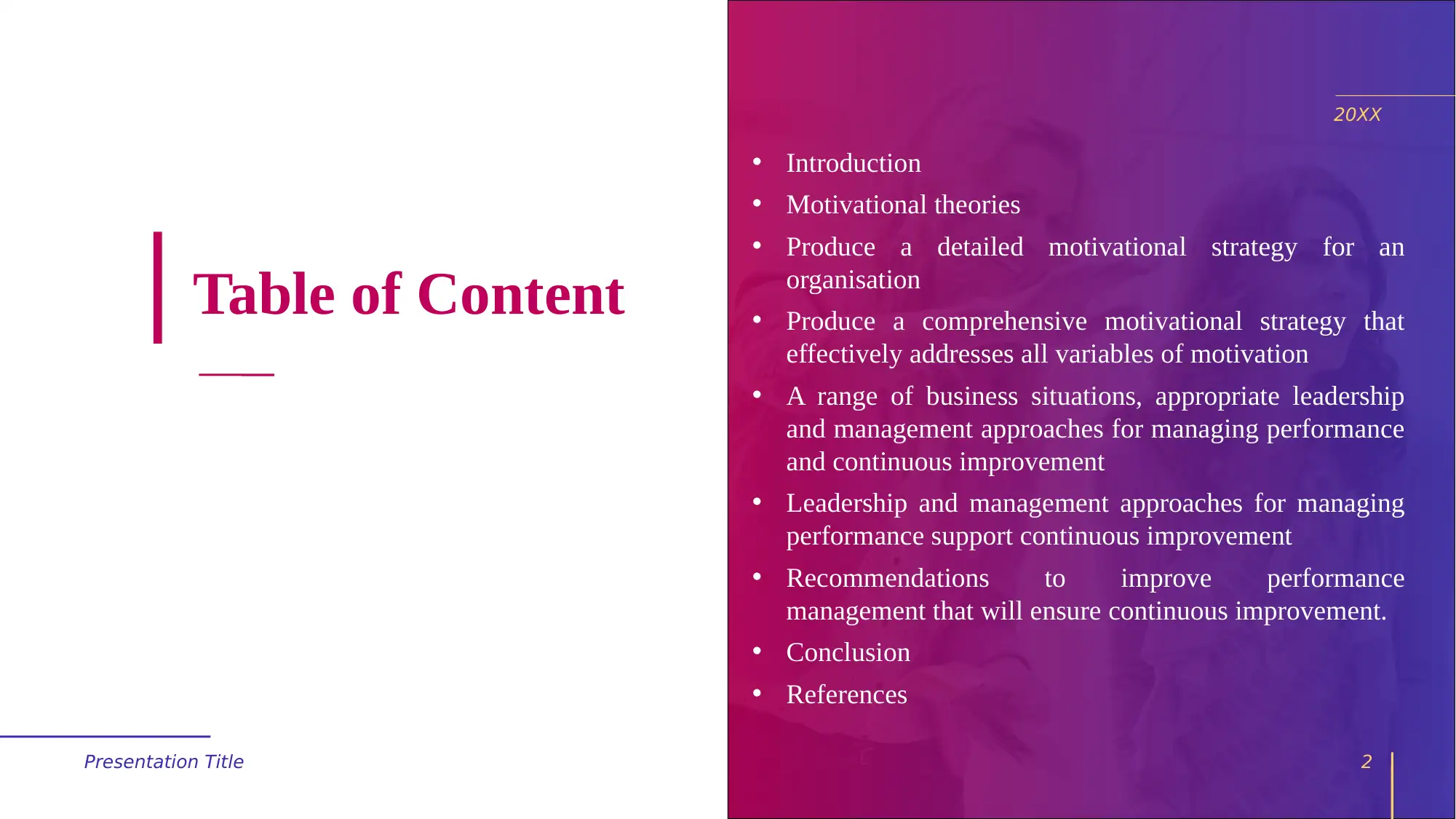
Presentation Title 2
Table of Content
• Introduction
• Motivational theories
• Produce a detailed motivational strategy for an
organisation
• Produce a comprehensive motivational strategy that
effectively addresses all variables of motivation
• A range of business situations, appropriate leadership
and management approaches for managing performance
and continuous improvement
• Leadership and management approaches for managing
performance support continuous improvement
• Recommendations to improve performance
management that will ensure continuous improvement.
• Conclusion
• References
20XX
Table of Content
• Introduction
• Motivational theories
• Produce a detailed motivational strategy for an
organisation
• Produce a comprehensive motivational strategy that
effectively addresses all variables of motivation
• A range of business situations, appropriate leadership
and management approaches for managing performance
and continuous improvement
• Leadership and management approaches for managing
performance support continuous improvement
• Recommendations to improve performance
management that will ensure continuous improvement.
• Conclusion
• References
20XX
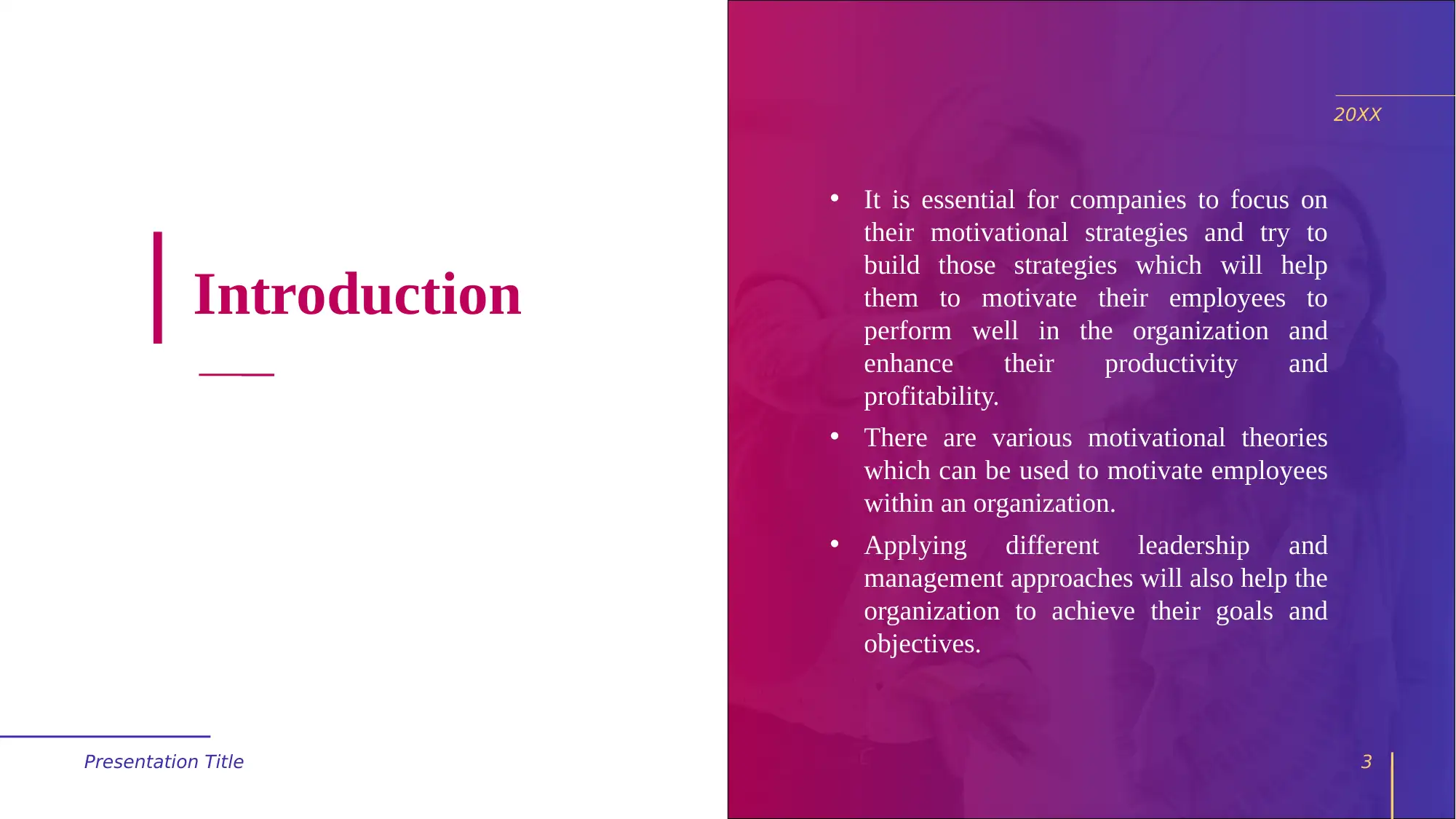
Presentation Title 3
Introduction
• It is essential for companies to focus on
their motivational strategies and try to
build those strategies which will help
them to motivate their employees to
perform well in the organization and
enhance their productivity and
profitability.
• There are various motivational theories
which can be used to motivate employees
within an organization.
• Applying different leadership and
management approaches will also help the
organization to achieve their goals and
objectives.
20XX
Introduction
• It is essential for companies to focus on
their motivational strategies and try to
build those strategies which will help
them to motivate their employees to
perform well in the organization and
enhance their productivity and
profitability.
• There are various motivational theories
which can be used to motivate employees
within an organization.
• Applying different leadership and
management approaches will also help the
organization to achieve their goals and
objectives.
20XX
⊘ This is a preview!⊘
Do you want full access?
Subscribe today to unlock all pages.

Trusted by 1+ million students worldwide
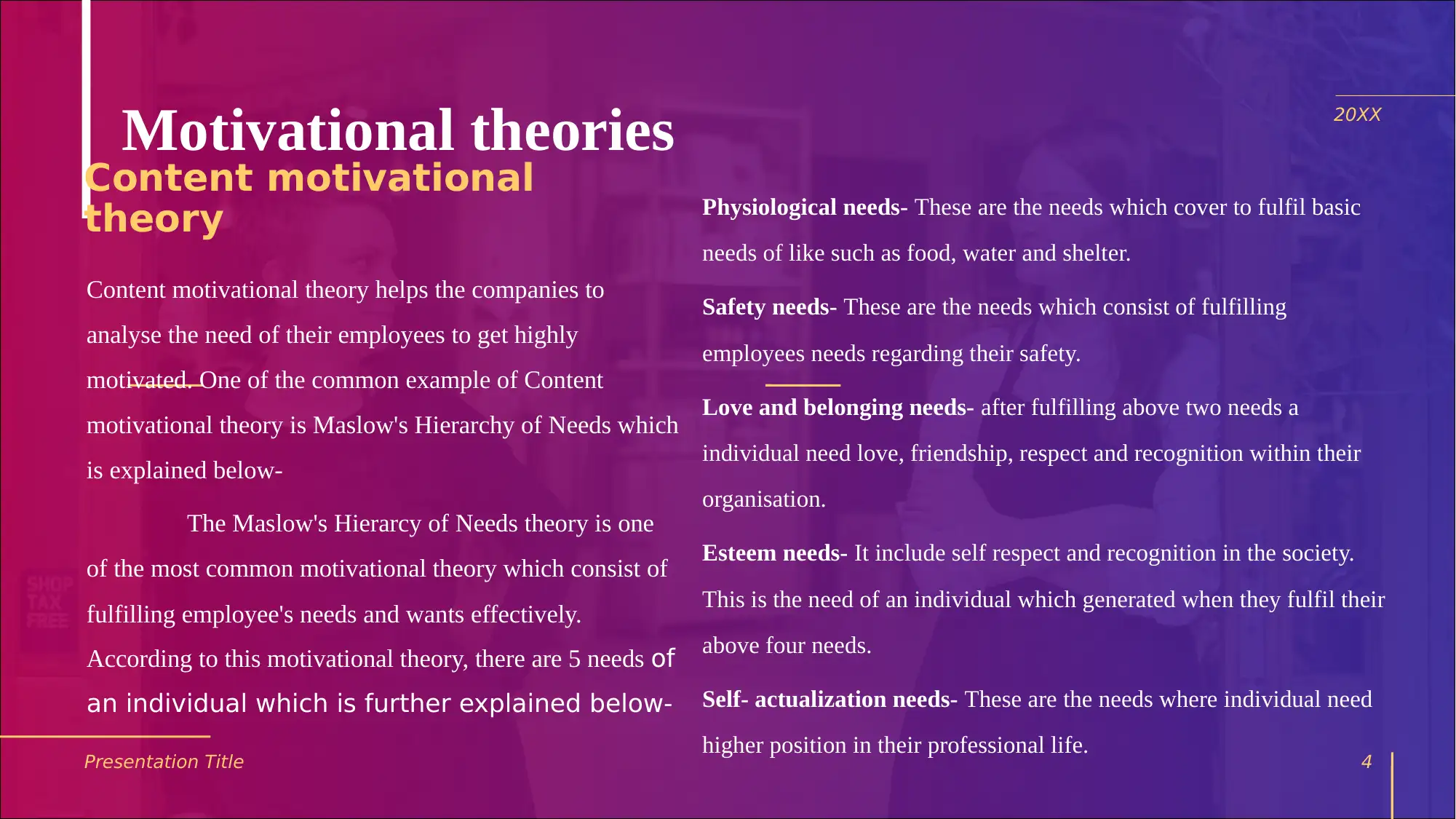
Presentation Title 4
Motivational theories
Content motivational
theory
Content motivational theory helps the companies to
analyse the need of their employees to get highly
motivated. One of the common example of Content
motivational theory is Maslow's Hierarchy of Needs which
is explained below-
The Maslow's Hierarcy of Needs theory is one
of the most common motivational theory which consist of
fulfilling employee's needs and wants effectively.
According to this motivational theory, there are 5 needs of
an individual which is further explained below-
20XX
Physiological needs- These are the needs which cover to fulfil basic
needs of like such as food, water and shelter.
Safety needs- These are the needs which consist of fulfilling
employees needs regarding their safety.
Love and belonging needs- after fulfilling above two needs a
individual need love, friendship, respect and recognition within their
organisation.
Esteem needs- It include self respect and recognition in the society.
This is the need of an individual which generated when they fulfil their
above four needs.
Self- actualization needs- These are the needs where individual need
higher position in their professional life.
Motivational theories
Content motivational
theory
Content motivational theory helps the companies to
analyse the need of their employees to get highly
motivated. One of the common example of Content
motivational theory is Maslow's Hierarchy of Needs which
is explained below-
The Maslow's Hierarcy of Needs theory is one
of the most common motivational theory which consist of
fulfilling employee's needs and wants effectively.
According to this motivational theory, there are 5 needs of
an individual which is further explained below-
20XX
Physiological needs- These are the needs which cover to fulfil basic
needs of like such as food, water and shelter.
Safety needs- These are the needs which consist of fulfilling
employees needs regarding their safety.
Love and belonging needs- after fulfilling above two needs a
individual need love, friendship, respect and recognition within their
organisation.
Esteem needs- It include self respect and recognition in the society.
This is the need of an individual which generated when they fulfil their
above four needs.
Self- actualization needs- These are the needs where individual need
higher position in their professional life.
Paraphrase This Document
Need a fresh take? Get an instant paraphrase of this document with our AI Paraphraser
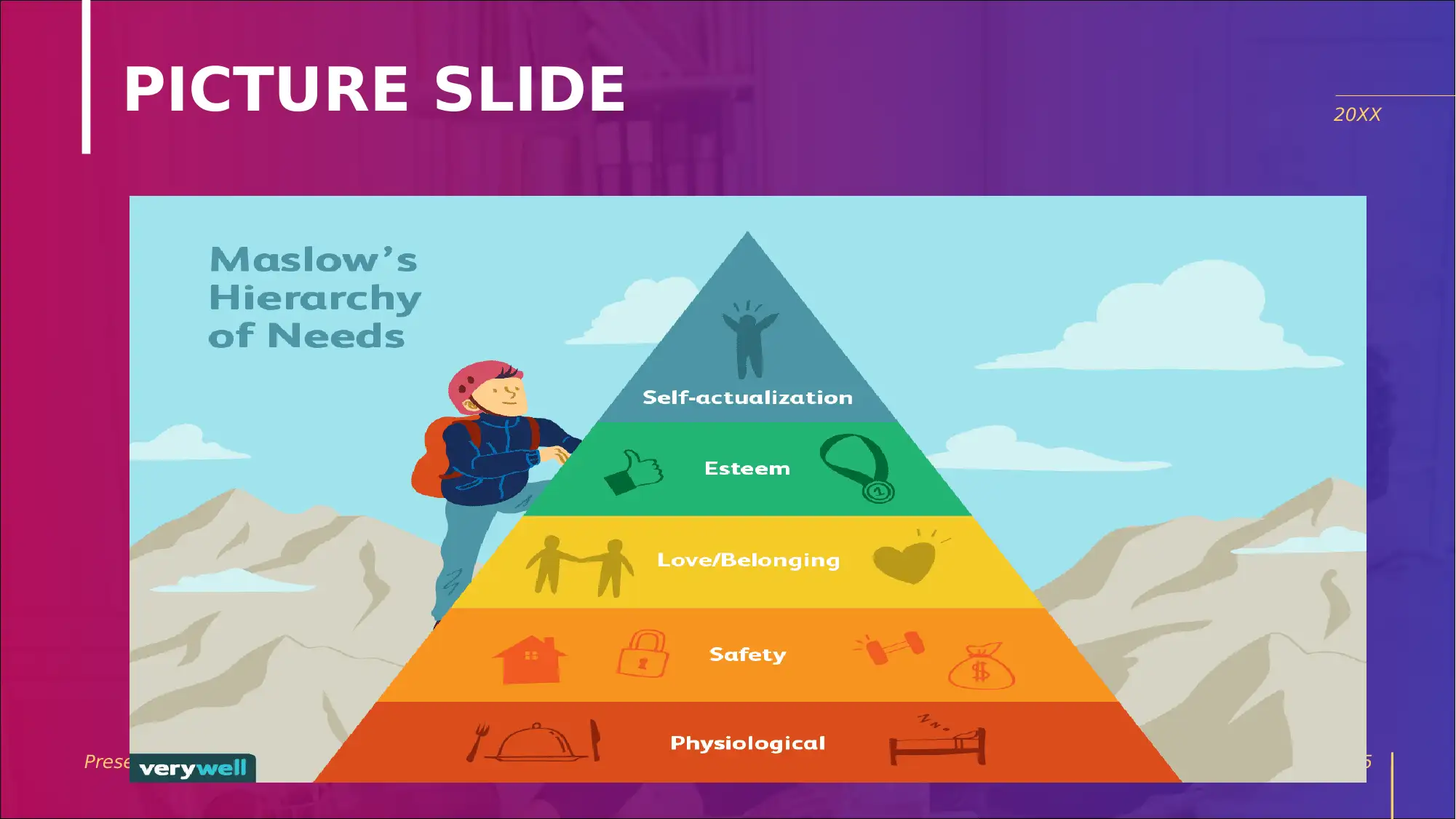
Presentation Title 5
PICTURE SLIDE 20XX
PICTURE SLIDE 20XX
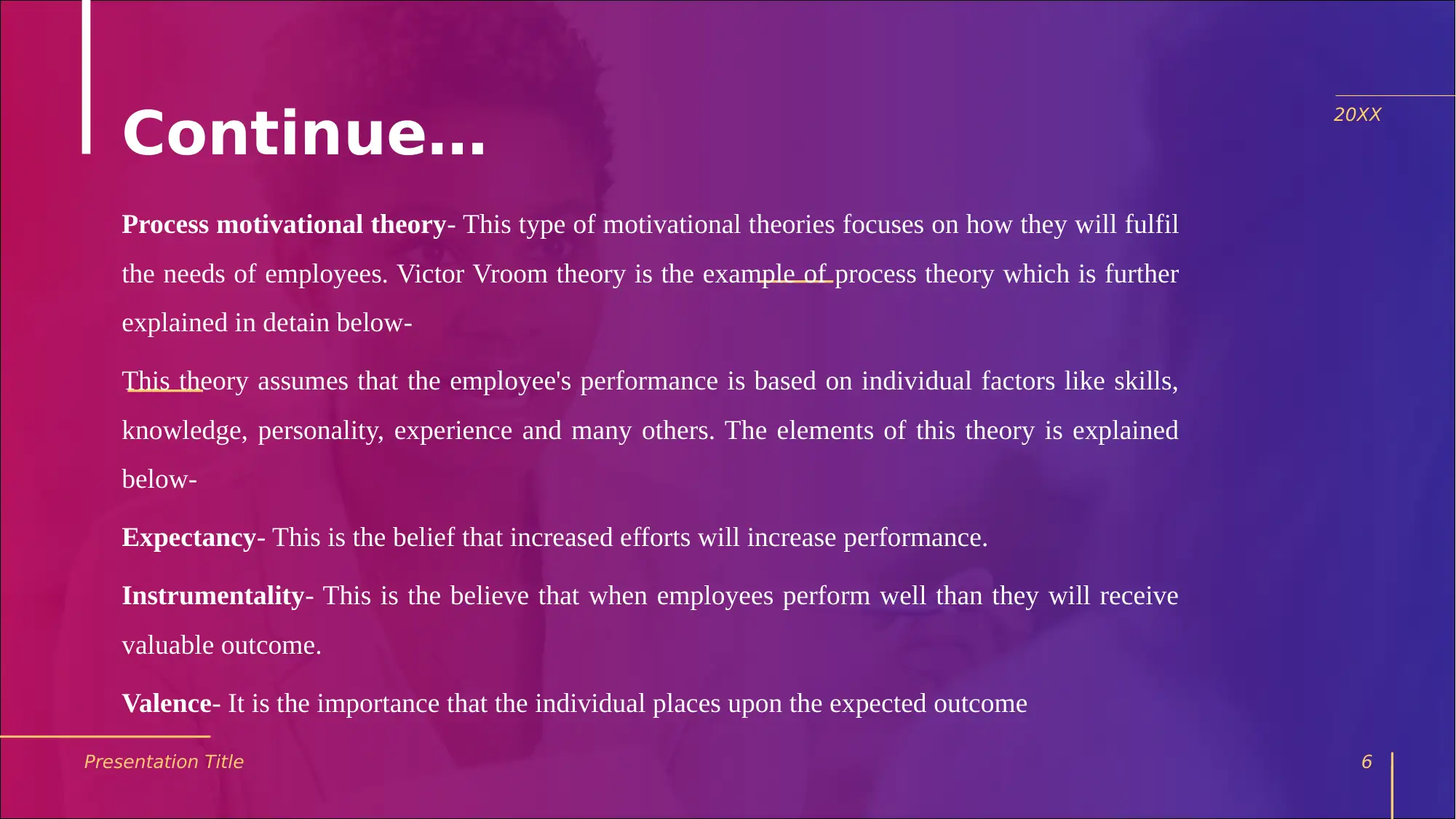
Presentation Title 6
Continue…
Process motivational theory- This type of motivational theories focuses on how they will fulfil
the needs of employees. Victor Vroom theory is the example of process theory which is further
explained in detain below-
This theory assumes that the employee's performance is based on individual factors like skills,
knowledge, personality, experience and many others. The elements of this theory is explained
below-
Expectancy- This is the belief that increased efforts will increase performance.
Instrumentality- This is the believe that when employees perform well than they will receive
valuable outcome.
Valence- It is the importance that the individual places upon the expected outcome
20XX
Continue…
Process motivational theory- This type of motivational theories focuses on how they will fulfil
the needs of employees. Victor Vroom theory is the example of process theory which is further
explained in detain below-
This theory assumes that the employee's performance is based on individual factors like skills,
knowledge, personality, experience and many others. The elements of this theory is explained
below-
Expectancy- This is the belief that increased efforts will increase performance.
Instrumentality- This is the believe that when employees perform well than they will receive
valuable outcome.
Valence- It is the importance that the individual places upon the expected outcome
20XX
⊘ This is a preview!⊘
Do you want full access?
Subscribe today to unlock all pages.

Trusted by 1+ million students worldwide
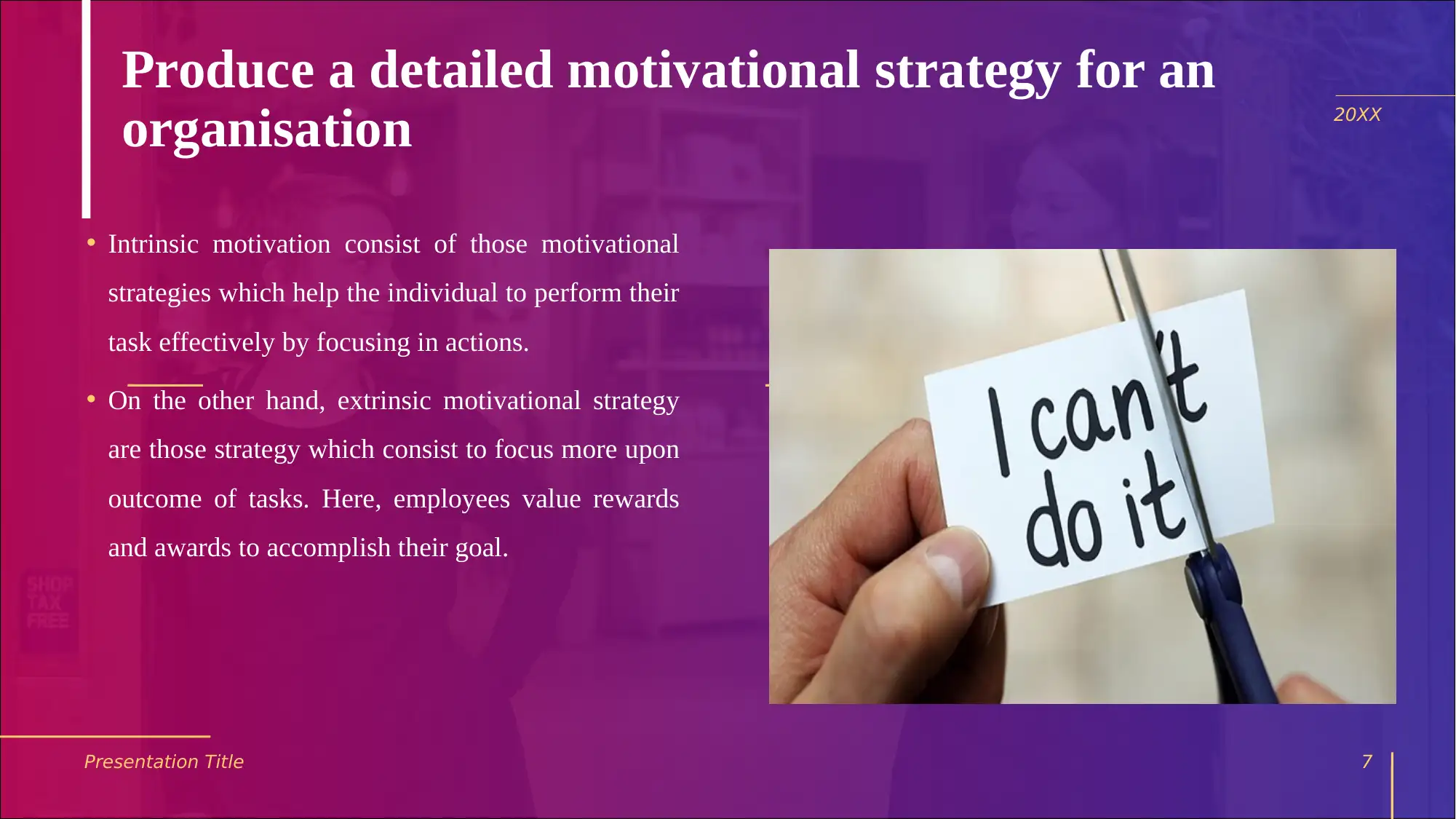
Presentation Title 7
Produce a detailed motivational strategy for an
organisation
• Intrinsic motivation consist of those motivational
strategies which help the individual to perform their
task effectively by focusing in actions.
• On the other hand, extrinsic motivational strategy
are those strategy which consist to focus more upon
outcome of tasks. Here, employees value rewards
and awards to accomplish their goal.
20XX
Produce a detailed motivational strategy for an
organisation
• Intrinsic motivation consist of those motivational
strategies which help the individual to perform their
task effectively by focusing in actions.
• On the other hand, extrinsic motivational strategy
are those strategy which consist to focus more upon
outcome of tasks. Here, employees value rewards
and awards to accomplish their goal.
20XX
Paraphrase This Document
Need a fresh take? Get an instant paraphrase of this document with our AI Paraphraser
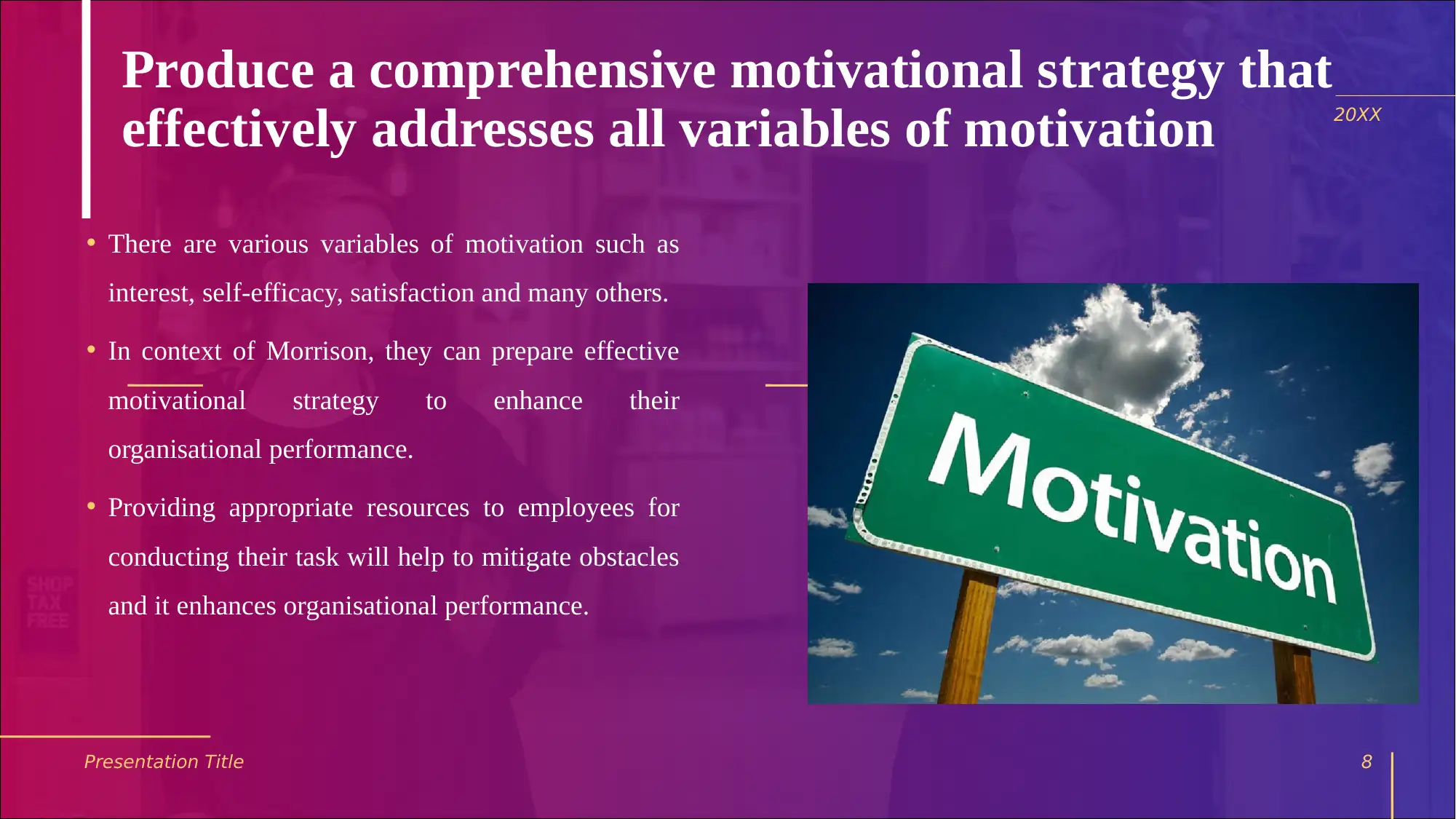
Presentation Title 8
Produce a comprehensive motivational strategy that
effectively addresses all variables of motivation
• There are various variables of motivation such as
interest, self-efficacy, satisfaction and many others.
• In context of Morrison, they can prepare effective
motivational strategy to enhance their
organisational performance.
• Providing appropriate resources to employees for
conducting their task will help to mitigate obstacles
and it enhances organisational performance.
20XX
Produce a comprehensive motivational strategy that
effectively addresses all variables of motivation
• There are various variables of motivation such as
interest, self-efficacy, satisfaction and many others.
• In context of Morrison, they can prepare effective
motivational strategy to enhance their
organisational performance.
• Providing appropriate resources to employees for
conducting their task will help to mitigate obstacles
and it enhances organisational performance.
20XX
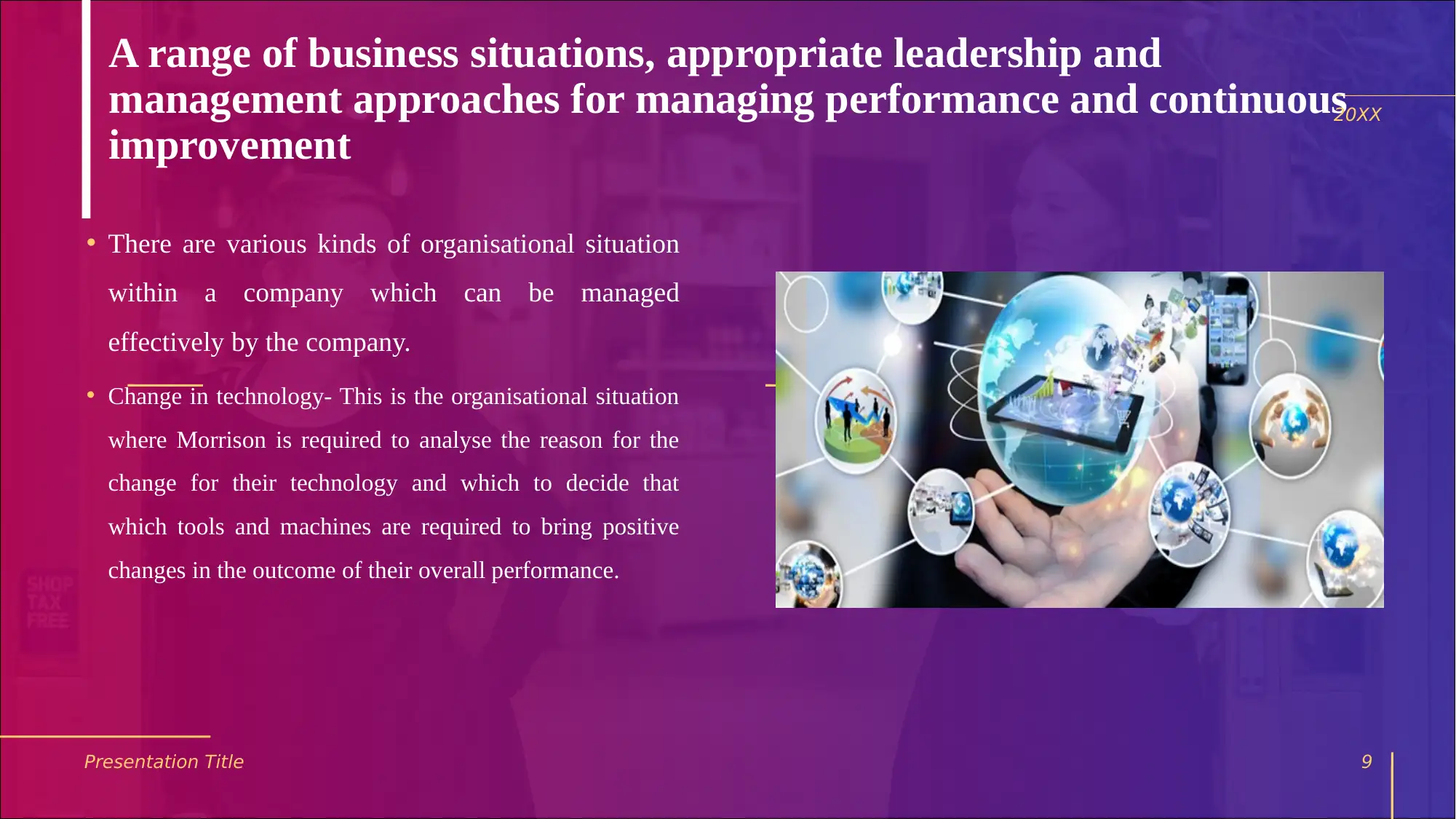
Presentation Title 9
A range of business situations, appropriate leadership and
management approaches for managing performance and continuous
improvement
• There are various kinds of organisational situation
within a company which can be managed
effectively by the company.
• Change in technology- This is the organisational situation
where Morrison is required to analyse the reason for the
change for their technology and which to decide that
which tools and machines are required to bring positive
changes in the outcome of their overall performance.
20XX
A range of business situations, appropriate leadership and
management approaches for managing performance and continuous
improvement
• There are various kinds of organisational situation
within a company which can be managed
effectively by the company.
• Change in technology- This is the organisational situation
where Morrison is required to analyse the reason for the
change for their technology and which to decide that
which tools and machines are required to bring positive
changes in the outcome of their overall performance.
20XX
⊘ This is a preview!⊘
Do you want full access?
Subscribe today to unlock all pages.

Trusted by 1+ million students worldwide
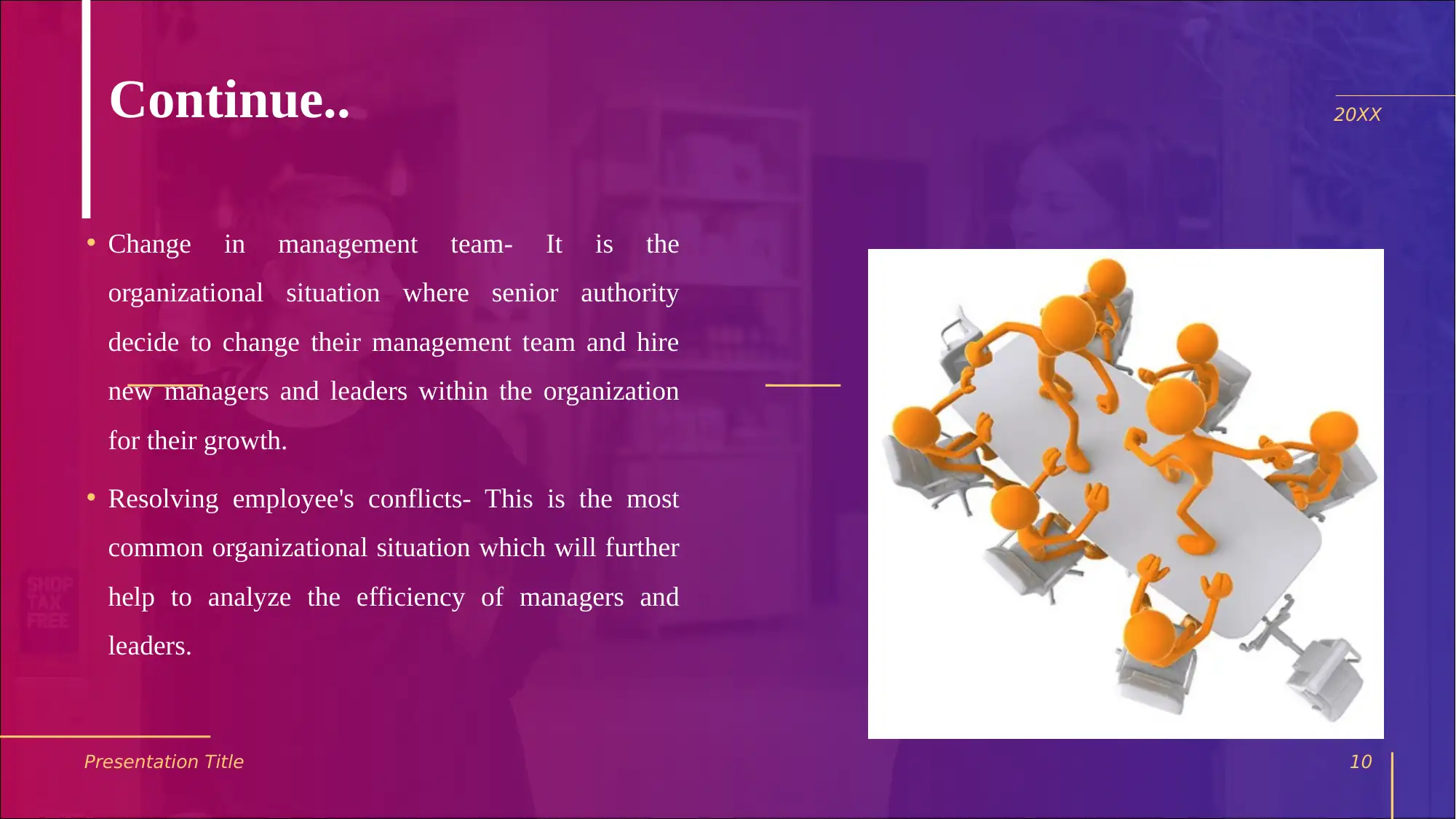
Presentation Title 10
Continue..
• Change in management team- It is the
organizational situation where senior authority
decide to change their management team and hire
new managers and leaders within the organization
for their growth.
• Resolving employee's conflicts- This is the most
common organizational situation which will further
help to analyze the efficiency of managers and
leaders.
20XX
Continue..
• Change in management team- It is the
organizational situation where senior authority
decide to change their management team and hire
new managers and leaders within the organization
for their growth.
• Resolving employee's conflicts- This is the most
common organizational situation which will further
help to analyze the efficiency of managers and
leaders.
20XX
Paraphrase This Document
Need a fresh take? Get an instant paraphrase of this document with our AI Paraphraser
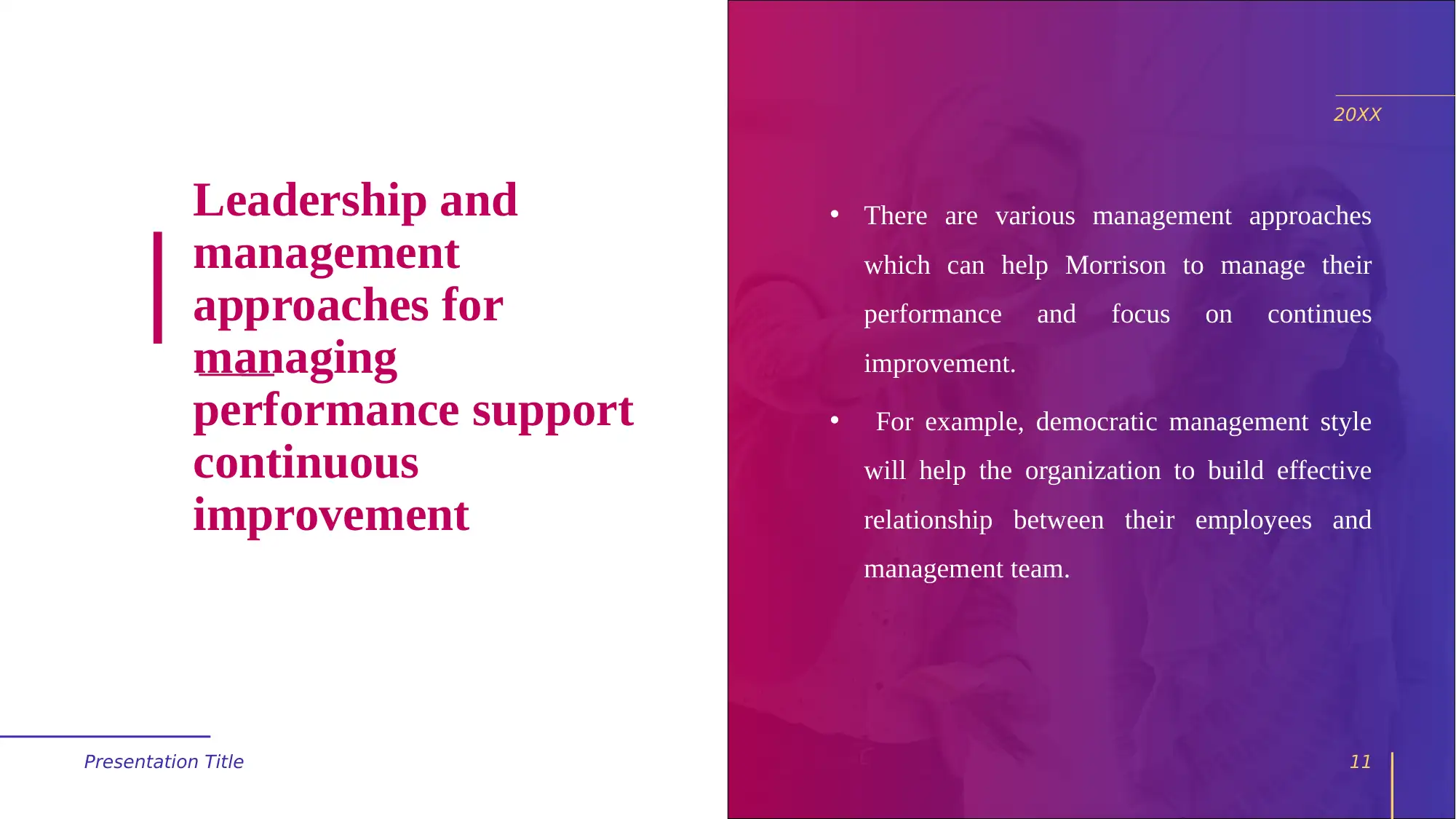
Presentation Title 11
Leadership and
management
approaches for
managing
performance support
continuous
improvement
• There are various management approaches
which can help Morrison to manage their
performance and focus on continues
improvement.
• For example, democratic management style
will help the organization to build effective
relationship between their employees and
management team.
20XX
Leadership and
management
approaches for
managing
performance support
continuous
improvement
• There are various management approaches
which can help Morrison to manage their
performance and focus on continues
improvement.
• For example, democratic management style
will help the organization to build effective
relationship between their employees and
management team.
20XX
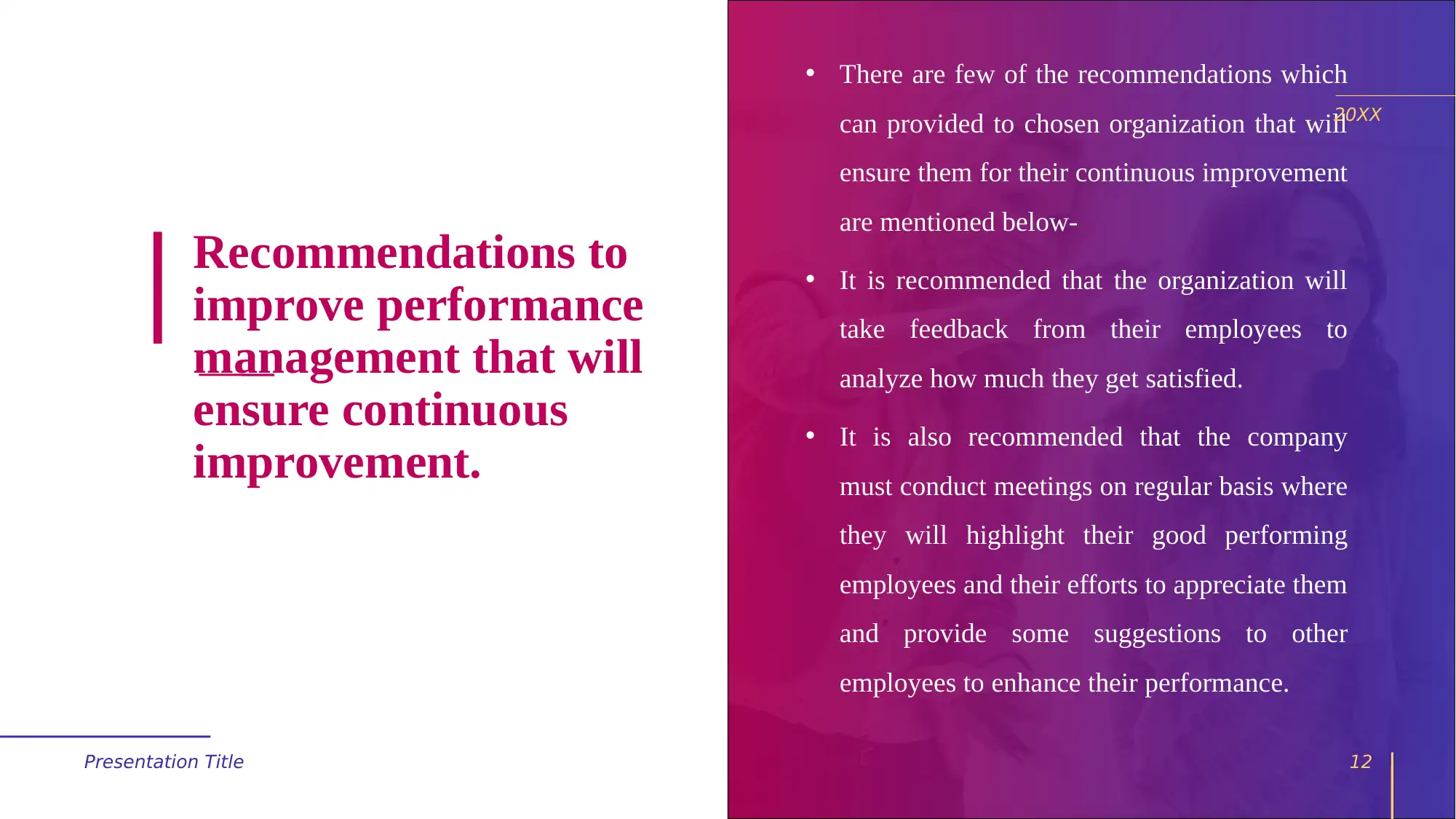
Presentation Title 12
Recommendations to
improve performance
management that will
ensure continuous
improvement.
• There are few of the recommendations which
can provided to chosen organization that will
ensure them for their continuous improvement
are mentioned below-
• It is recommended that the organization will
take feedback from their employees to
analyze how much they get satisfied.
• It is also recommended that the company
must conduct meetings on regular basis where
they will highlight their good performing
employees and their efforts to appreciate them
and provide some suggestions to other
employees to enhance their performance.
20XX
Recommendations to
improve performance
management that will
ensure continuous
improvement.
• There are few of the recommendations which
can provided to chosen organization that will
ensure them for their continuous improvement
are mentioned below-
• It is recommended that the organization will
take feedback from their employees to
analyze how much they get satisfied.
• It is also recommended that the company
must conduct meetings on regular basis where
they will highlight their good performing
employees and their efforts to appreciate them
and provide some suggestions to other
employees to enhance their performance.
20XX
⊘ This is a preview!⊘
Do you want full access?
Subscribe today to unlock all pages.

Trusted by 1+ million students worldwide
1 out of 15
Related Documents
Your All-in-One AI-Powered Toolkit for Academic Success.
+13062052269
info@desklib.com
Available 24*7 on WhatsApp / Email
![[object Object]](/_next/static/media/star-bottom.7253800d.svg)
Unlock your academic potential
Copyright © 2020–2025 A2Z Services. All Rights Reserved. Developed and managed by ZUCOL.

